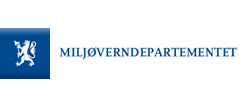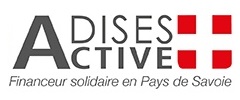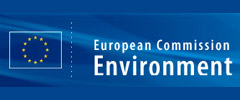Time to act: protecting children from hormone disrupting chemicals
Debate with policy makers in Brussels looks at need to speed up EU action to protect children’s exposure to harmful ‘endocrine disrupting’ chemicals
21.02.2014 | WECF

To launch the Life+ Project “ChildProtect – Protecting Children from Hormone Disrupting Chemicals” the NGOs “Women in Europe for a Common Future” (WECF), PAN-Europe and Gezinsbond organized a debate on EU’s EDC policies with Members of the European Parliament, scientists, NGOs, and representatives from the Directorate Generals for Health and Environment, on 19th of February 2014.
EDCs key challenge for European environment and health policies
There is growing evidence that EDCs may result in permanent health damage to the hormone system of children. Pregnant women are exposed to these chemicals on a daily basis, transferring them to their child in the womb. EDCs can be found amongst others in sprayed fruits and vegetables, plastics, bottles, cutlery, toiletries and cosmetics, toys, clothing and cleaning products. The World Health Organisation (WHO) has highlighted the threat they pose to human health and the European Environment Agency to the risk to the environment. Endocrine disrupting chemicals (EDCs) have emerged as a key challenge for European environment and health policies, but the time-plan for action is being continuously delayed.
Children’s health should be our primary concern
Scientific studies point out the role of perinatal exposures to EDCs, which can trigger various diseases like cancer, ADHD or diabetes, even later in life. Dr. Gavin Ten Tusscher, peadiatrician at the Westfries Gasthuis in Hoorn, a hospital which has made all medical devices EDC free over the past couple of years opened the first session of the debate, explained the effect of endocrine disruptors and how children are exposed to them. Exposure to toxic and hormone disrupting chemicals such as DEHP[3] is the highest among the most vulnerable, babies born preterm who are fed through nasogastric tubes the first weeks of their lives, they can receive up to 1000 times the dose adults receive, with a risk of long-term, irreversible health effects such as testicular cancer, low semen quality and endometriosis”. The American Medical Association recommended that all hospitals choose medical devises which are DHEP-free, but few are doing so.
Study shows long term effects of EDCs
Janna Koppe, em. Prof Neonatology at Amsterdam University presented studies showing the long term effects of EDCs even transgenerational. Being exposed to EDCs can show harmful effects even in the grandchild generation. Avoiding EDCs during pregnancy is urgently needed, but almost impossible as EDCs can be found in food, plastics, toiletries and cleaning products. Therefore strong regulation to prevent pregnant women from EDCs should be in place. In the meantime pregnant women should be informed about EDCs in products to give them a chance to buy healthier alternatives.
Delay in European EDCs strategy and criteria
The European Union was planned to adopt a Strategy on EDCs and related criteria in 2013, but this has been delayed and no new time-line has been made known. Sascha Gabizon, Executive Director of WECF noted that each year of delay, another 5 million children are born in the EU with a risk of long-term irreversible health impacts, which seems irresponsible. We need to make the arguments to protect children from hormone disrupting chemicals much stronger, said Danish MEP Christel Schaldemose who participated in the debate, we can no longer wait.
Martin Seychell from the European Commission of DG Sanco justified the long delay in the development of EDC criteria and strategy that civil society should have a chance to contribute to the impact assessment, which will be carried out this year. However some participants raised the question, why this impact assessment was not done earlier, given the fact that the criteria and strategy were supposed to be finalized by now. Hiltrud Breyer, German MEP for the Greens was worried about this approach by DG Sanco and shocked to find that, after a four year leave from the Parliament, nothing had really changed and the European commission had postponed decision making thus far, "the interim criteria for EDCs adopted are not even being implemented". She continued "It seems as if the European Commission is deregulating the existing EDC related legislation by delays or bad implementation".
Parents are concerned
Protecting children's health from endocrine disrupting chemicals is a key concern for a great number of civil society and medical sector organisations, stated Genon Jensen, Director of HEAL. We are working together in the EDC-free Europe campaign to bridge the science-policy gap and assure application of the precautionary principle. Lisette van Vliet (HEAL) called for the Commission to isue a comprehensive EU EDC strategy as soon as possible, stating that we could be incurring very high costs to society from delaying action on a wide range of suspected EDCs. In the USA the costs of not regulating EDCs are already estimated to cost tax payers 1 trillion USD each year, according to TEDX. The real risks of EDC’s for Children have resulted in many individual European member states taking action, including Sweden, Belgium, France and Denmark, which have mandatory substitution of some EDCs suspected chemicals such as Bisphenol-A and Phthalates going beyond the current EU regulation. Sascha Gabizon, demanded targeted information campaigns and labelling especially for parents of young children. “After a report on EDCs on Dutch TV our mailbox exploded. “Parents are concerned, they want information and alternatives, but they don’t get access to this information and continue to involuntarily expose their children to EDCs”.
According to WECF the main points for action are:
- Protection of children by applying the precautionary principle, through mandatory subsitution of known EDC chemicals in children's products, neo-natal care and day-care centers.
- End the delay of the EU EDC criteria and strategy - every year 5 Mio babies are born in the EU, every delay poses health risks at them
- Ask governments to inform pregnant women in the EU immediately about EDCs, and about safer products and alternatives.
“The ChildProtect” Life project will have as its goal the protection of children from these adverse effects of EDCs. This parallels the EU goal envisaged for 2020, in relation to public health. The “ChildProtect” Life project will aim to help achieve this EU goal by hastening the creation of regulations requiring the substitution of EDCs.This project is supported by the Life+ Project of the European Commission, DG Environment.
[1] Majority of scientists with expertise in the area of endocrinology, hormone disruption, are calling for urgent policy action, as expressed joint WHO/UNEP report (2013), as well as in the Berlyamont Declaration (2003) and a Statement of the Endocrine Society (2009).
NB: of course this does not refer to other scientists whose expertise do not cover endocrine disruption and health.
[2] Nickel is a carcenogen class 2 and alergen, which according to WECF has no place in children’s toys.
[3] DEHP is part of a group of chemicals called ‘phthalates’ a plastic softener used in many plastics, including in medical devise tubes. Non DEHP medical tubes exist on the market, but few hospitals use them.
Related News
WECF co-organising partner Green Pharmacy Conference 2017
The environmental cycle of medicines - an incentive for innovation in the human and veterinary medicine chain
21.09.2017
Recycling contaminates plastic children’s toys with toxic chemicals from electronic waste
A new global survey finds that recycling plastics containing toxic flame retardant chemicals found in electronic waste results in contamination of the world’s best-selling toy: The Rubik’s Cube.
20.04.2017
One step towards a safer blood bag
WECF speaker at final Seminar of the LIFE+ project PVC Free Blood Bag, 27-28 September, in Östersund, Sweden
11.10.2016
WECF sends letter to Dutch Secretary of State concerning EU policy on EDCs
In a joint statement WECF and the EDC Free Coalition ask Dutch State Secretary Dijksma to insist on major changes at the Environmental Council meeting to protect our health and environment.
21.06.2016
Commission's EDC criteria proposal: More humans will have to be harmed before action is taken
The European Commission presented today its proposal for criteria to identify endocrine disrupting chemicals (EDCs). WECF and the EDCfree Coalition condemn strongly the decision.
15.06.2016




































